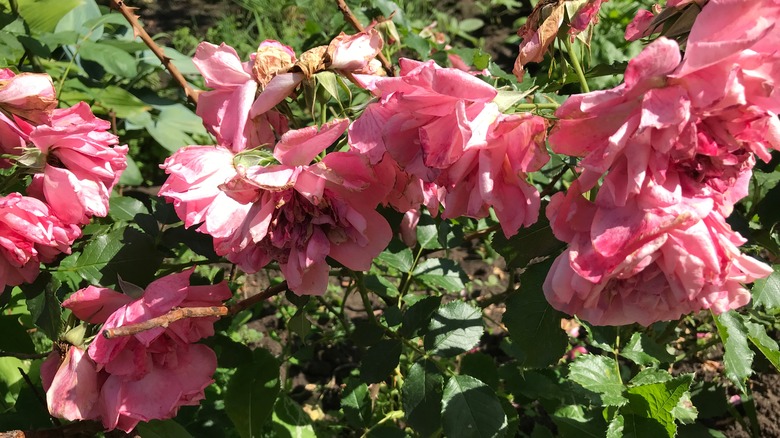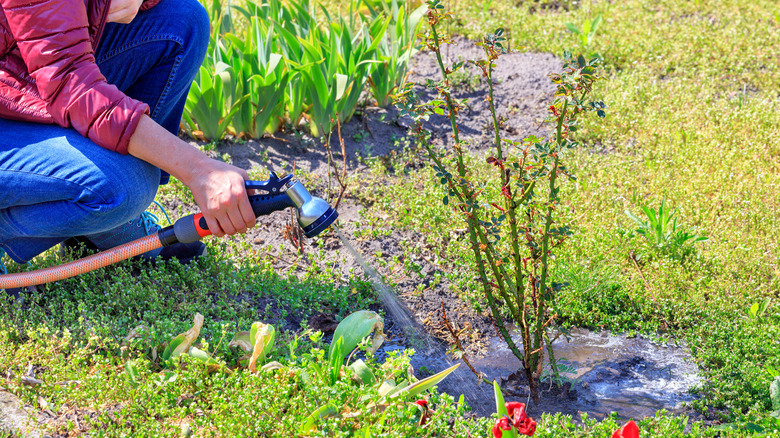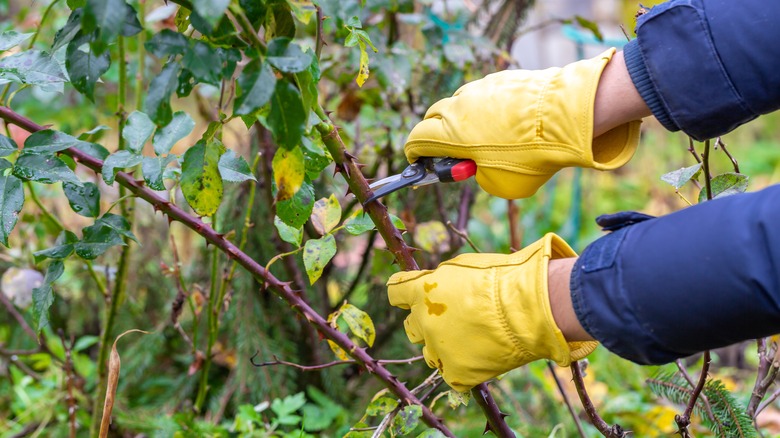Can You Save A Rose That Is Partially Dead?
A rose with a dried-out stem, wilting or missing petals, or a lack of blooms can be a sad component of your garden, but that doesn't mean you can't revive it. To save a rose that's partially dead or dying, you'll need to address specific concerns. Careful pruning, improved access to nutrients, better-draining soil, and overall a bit of time and attention may help the rose bush come back to life and even make it better.
The type of care you provide is dependent on what could be wrong. Often called rose dieback, this occurs for a number of reasons, including fungus growth, too much or too little nutrient access, bad placement, or insect damage. Examine the rose carefully to pinpoint what's not going well. You may, for example, notice the rose is sitting in soil that's very wet, which could lead to discoloration and death at the root. Look for signs of fungus near the base of the rose. You may also notice insect damage to the leaves. Roses commonly dry out, creating brittle stems and missing or wilted petals. This is often due to too much sun exposure and not enough moisture.
Remember that roses don't always bloom and have a dormant phase that can last a month or longer, often occurring in the fall months. Once you have a good idea of what's happening, here's how to save your roses.
Improve the rose environment to encourage healthy growth
The first step in reviving a partially dead rose is to improve its environment. There are some differences among rose types in terms of how much water and sunlight they need, but the key is to avoid any extremes. Roses typically need a good amount of water, so keeping the soil moist is essential. Water every few days to make sure of this. However, the soil shouldn't have pooling water as that can lead to fungus development and root rot. Water just enough so that the soil dries out in between watering. How much depends on temperature and humidity levels in your area, too. On a hot day, water your roses early in the morning to give them a refreshing gulp to manage the sun's intensity.
Ensure the roses are getting enough sunlight, usually about six or more hours each day. Most will love the hot sun, and a lack of blooms typically means they aren't getting enough of it. Consider moving the roses to an environment with ample sun, especially in the morning. Afternoon shade is okay as long as they get several hours of sun.
Finally, improve the nutrient content in the soil to boost the rose's environment. More is not always a good thing, though. Roses need to have enough fertilizer to keep up with their constant blooming. You don't want to fertilize too much, as that can cause root burn and yellowing leaves. Instead, try organic, nutrient-dense soil when possible.
Supporting the plant's recovery
Take a close look at your rose to pinpoint the support it needs. Start with pest control by removing any noticeable pests and transplanting the roses away from highly pest-filled areas. You can use pesticides or organic pest control solutions to give your roses more of a fighting chance.
Next, prune away any areas of significant damage, including any fungus-infested or pest-damaged leaves. Remove all dead wood, which includes all stems that are brown. Roses should have green, strong stems. You can trim back all dead wood to the base of the bush, helping the plant to stop focusing on those areas. If there are very thin stems, that's weak growth, which can also be trimmed back.
Once you remove any damaged areas, seal all of the fresh cuts you've made using a pruning sealer. This helps to protect those wounds on your roses, encouraging them to heal. The goal is to encourage your rose bushes to focus on new growth to replace damaged areas.
Don't wait to provide this support to your roses. However, the most significant rose pruning should be in the early spring months after the threat of frost passes. In the fall, your first frost could cause damage to the blooms, and that's normal. Avoid too much pruning at this point, as you want the plant to store as much energy as possible for the winter months.


